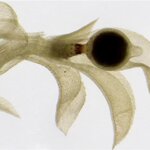In October 2015, a team of researchers at the University of Wisconsin-Madison and Universidad de Sucre in Colombia ran the first tests confirming the presence of Zika virus transmission in the South American country.
In a study published today [Jan 26, 2016] in the journal Emerging Infectious Diseases, the team documents a disease trajectory that started with nine positive patients and has now spread to more than 13,000 infected individuals in that country.
"Colombia is now only second to Brazil in the number of known Zika infections," says study lead author Matthew Aliota, a research…
Microbiology

When a sperm and an egg cell merge a new life begins. This is the case in humans and in animals, but in principle also in plants. A team has discovered a gene trigger in the moss Physcomitrella patens which leads to offspring without fertilization and the researchers assume that this mechanism is conserved in evolution and holds the key to answer fundamental questions in biology.
Just like humans and animals, mosses possess egg cells and motile sperm. That is why they are particularly well-suited to answer fundamental questions in biology. After fusion of sperm and egg cell, a network of…

Among adults with Clostridium difficile infection that is recurrent or not responsive to treatment, the use of frozen compared with fresh fecal microbiota transplantation (FMT) did not result in a significantly lower rate of resolution of diarrhea, indicating that frozen FMT may be a reasonable treatment option for these patients.
Clostridium difficile infection, the bacterial infection that is one of the most common causes of infection of the colon, in health care settings and in the community has become a major clinical concern. Increases in failure rates with conventional treatment,…

Louis Pasteur, the French microbiologist, is most famous for the heat treatment process that bears his name. Pasteurization has saved untold millions of lives by killing off foodborne pathogens, which used to be one of the top killers of humans.
He wasn't limited to saving lives by modernizing milk and he was modest about his efforts in food. As scientists often do, he believed he had 'stood on the shoulders of giants.' In the case of pasteurization, he had 7,000 years of supporting work already done, and he had studied it all. As he famously said, "dans les champs de l'…

When you think of it, all of the natural gas harvested by hydraulic fracturing is natural but groups that once embraced it as clean energy have now turned on it and have sought to use its biological origins against it, with manufactured videos of flaming tap water and such that have nothing to do with fracking.
They, and the anti-science groups like SourceWatch and Natural Resources Defense Council that they fund, can continue to lobby for a retreat into the past but the fact that some natural gas made by microorganisms is inadvertently injected into shale by oil and gas companies during…

New research on how our immune system works shows how the body mobilizes a previously unknown defense against viruses and bacteria- and thus why we do not constantly get ill despite the viruses around us.
Fever, sore muscles and other influenza-like symptoms are typical signs that your immune system is fighting against viruses and bacteria. The unpleasant condition is, among other things, due to the body forming a substance called interferon, which must defeat the virus. For many years researchers and doctors have assumed that this was the body's earliest response when attacked by…

An experiment to study aging in yeast cells followed molecular processes inside and discovered that an overproduction of the proteins needed to make new proteins which could be the root cause of the cellular processes that eventually kill the cells.
Baker's yeast is extensively used to study aging. A 'mother cell' can produce some twenty daughters in about four days, following which it dies. But as mothers and daughters are mixed in any yeast culture, it is virtually impossible to follow the aging process in great detail.
To avoid that, the team coupled iron beads to yeast cells…

Migration between different communities of bacteria is the key to the type of gene transfer that can lead to the spread of traits such as antibiotic resistance, according to researchers. While horizontal gene transfer - also known as bacterial sex - has long been acknowledged as central to microbial evolution, why it is able to exert such a strong effect has remained a mystery.
But now scientists at Oxford University have demonstrated through mathematical modelling that the secret is migration, whereby movement between communities of microbes greatly increases the chances of different…

Prairie gardens offer Midwestern suburban dwellers an alternative option to the traditional grass lawn. Their combination of native grasses, like tall and wispy bluestem and sideoats, and forbs, such as the colorful yellow and purple coneflowers, are a welcome addition to any lawn.
They also attract beneficial bees and other insects, as well as beautiful butterflies. The prairie plants are native to the Midwest and once established can require fewer resources, such as water, fertilizer, and time to maintain.
Besides just the gardens looking pleasing to the eye, Johnston was interested in…

The hepatitis A virus can trigger acute liver inflammation which generally has a mild course in small children but which can become dangerous in adults. The virus, which is found worldwide, has previously been considered to be a purely human pathogen which at most is found in isolated cases in non-human primates.
Now an international team of researchers under the direction of the University of Bonn has now discovered in a large-scale study with nearly 16,000 specimens from small mammals from various continents that the hepatitis A virus - like HIV or Ebola as well - is of likely animal…
